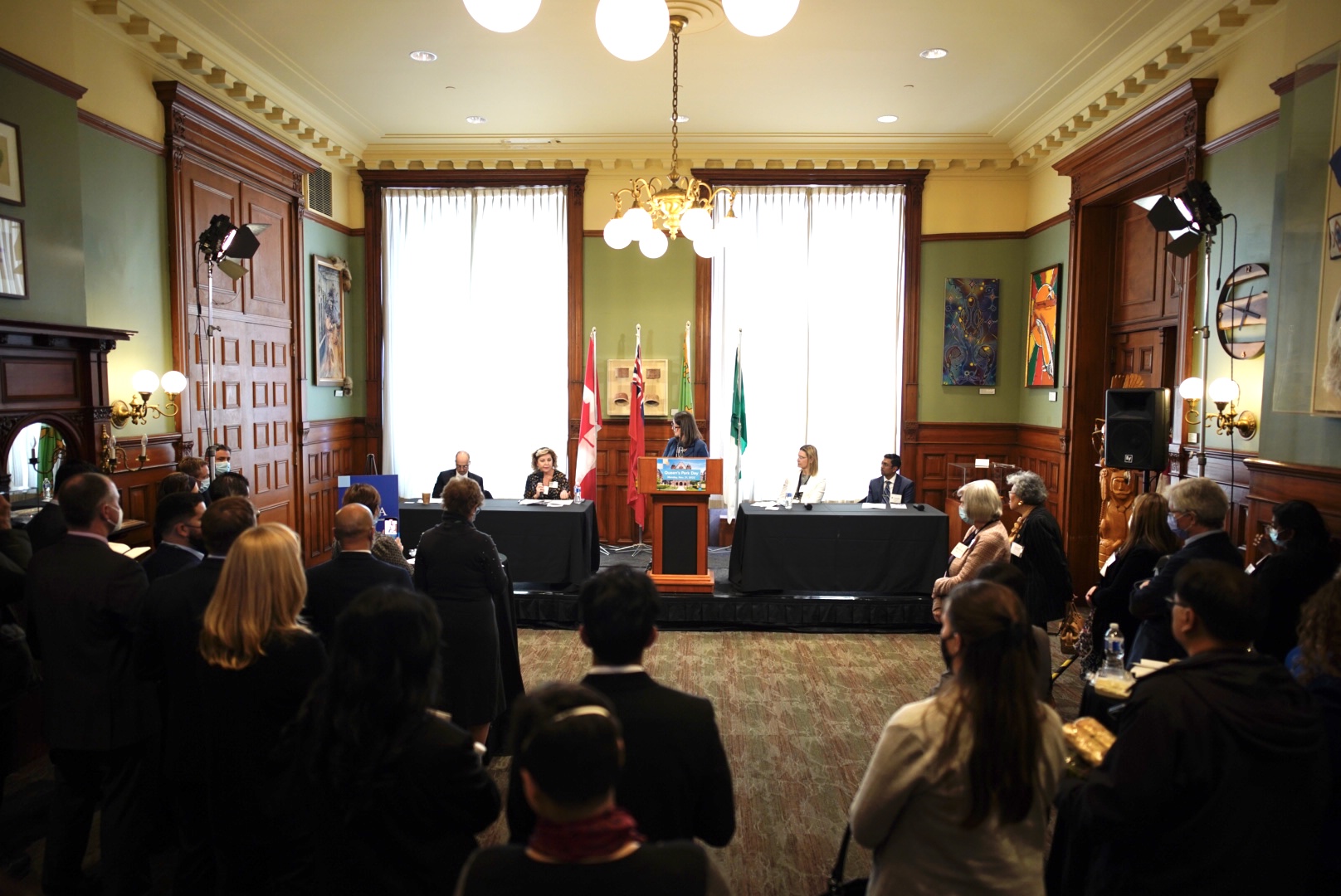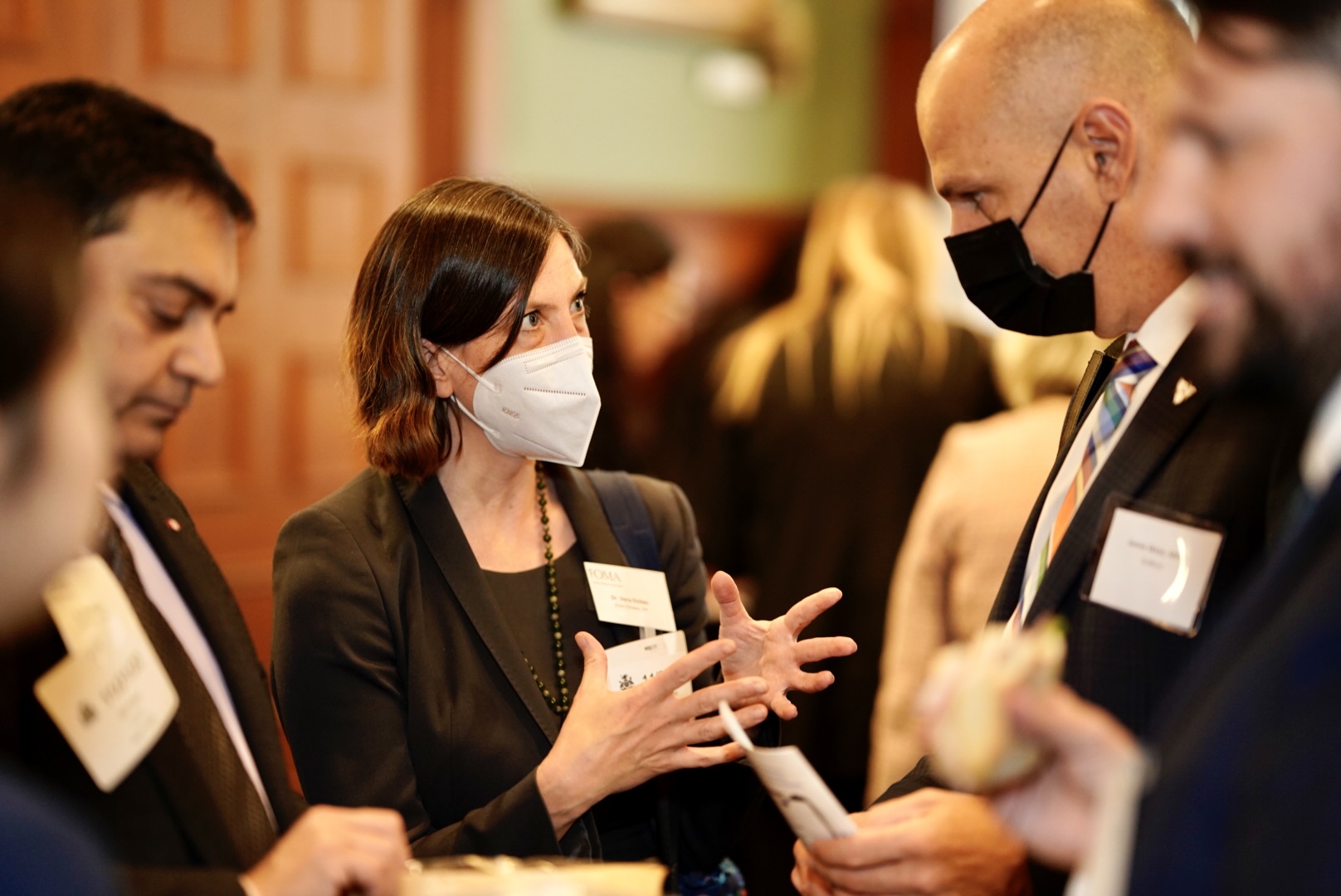OMA lobbies for increased patient access to care and improvements to system
More than 90 physicians joined the Ontario Medical Association in advocating to cabinet ministers and MPPs from all parties for three immediate solutions to increase patient access to care and improve the health-care system during a successful lobby day at the Ontario legislature.
“This day was all about patients, who need and deserve high-quality health care in Ontario,” said Dr. Rose Zacharias, OMA President.
“Doctors came to Queen’s Park with solutions and that was very well received.”

OMA President Dr. Rose Zacharias and CEO Allan O’Dette are joined by more than 50 physicians from across the province on the staircase of the Ontario legislature as part of the OMA’s Queen’s Park Day.
At close to 40 meetings, the president, CEO and doctors from across the province said they were ready to work with Ontario to improve patient access by addressing doctor shortages, shortening wait times and expanding palliative care. These solutions are part of a four-year roadmap for the future, Prescription for Ontario: Doctors’ 5-Point Plan for Better Health Care.
 Doctors took part in the legislature’s proceedings as members of the visitor’s gallery, where they were introduced and recognized by Health Minister Sylvia Jones, MPPs and health critics from all parties.
Doctors took part in the legislature’s proceedings as members of the visitor’s gallery, where they were introduced and recognized by Health Minister Sylvia Jones, MPPs and health critics from all parties.
“A number of MPPs commented this was the first time they remember so many doctors being recognized in the House,” said OMA CEO Allan O’Dette of the Nov. 21 event. “That, along with the minister of health’s acknowledgement of the critical role physicians continue to play in the province, signals that our elected officials view doctors as leaders in health-care transformation.”
Dr. Cathy Faulds moderates a panel during the OMA’s Queen’s Park Day. Panellists included from far left: Dr. David Urbach, head of surgery and medical director, perioperative services at Women’s College Hospital, Dr. Cathy Mastrogiacomo, chair of the OMA’s Section on General and Family Practitioners, OMA President Dr. Rose Zacharias and Dr. Stephen Singh, chair of the OMA’s Palliative Section.
During a panel discussion in the legislature, doctors asked all MPPs to share their support for:
“Family medicine is on life support,” Dr. Cathy Mastrogiacomo, a comprehensive family physician and chair of the OMA’s Section on General and Family Practice, told the audience.
 “We can address it in two ways — increasing resources and reducing demand.”
“We can address it in two ways — increasing resources and reducing demand.”
Dr. David Urbach, head of the department of surgery and director of perioperative services at Women’s College Hospital, said public hospitals are the backbone of the health system, but to ease pressure on them low-risk surgeries should be moved to IACs.
“IACs can create efficiencies that happen when one facility focuses on specialized care and they are insulated from hospitals, which are susceptible to system shocks that create a backlog of surgeries,” he said.
Dr. Vera Etches, medical officer of health for Ottawa Public Health, speaks about health-care solutions to NDP MPP Jamie West of Sudbury Centre, as Ottawa physician Dr. Atul Kapoor looks on.
Dr. Stephen Singh — a family physician, palliative care specialist and chair of the OMA Section on Palliative Medicine — said palliative care is not consistently available. When patients who need it are left in hospitals because there is nowhere else for them to go, that adds to the strain on overburdened hospitals.
“Palliative care unfortunately in Ontario is a postal code lottery,” he said.
“The ultimate goal would be to ensure there is an around-the-clock system in place to ensure patients receive the right care, in the right place, at the right time.”